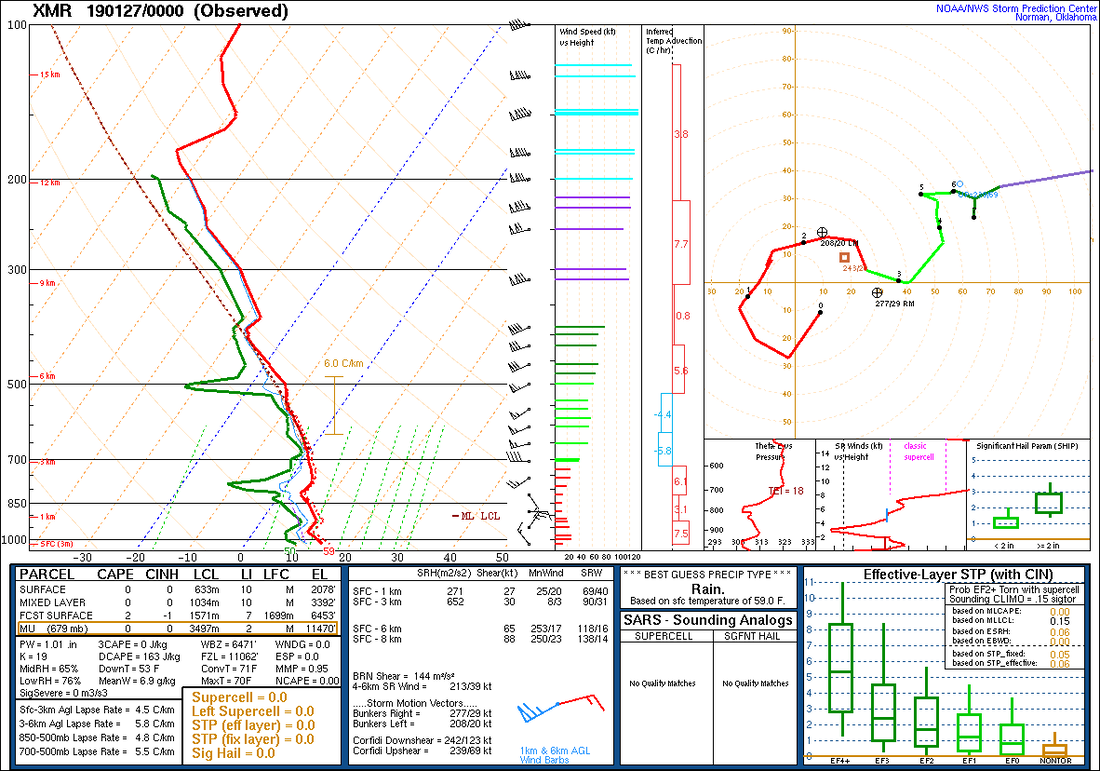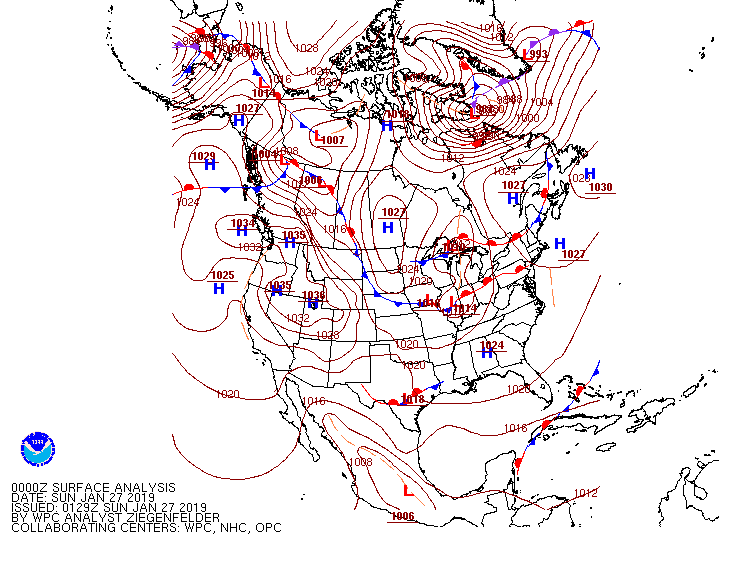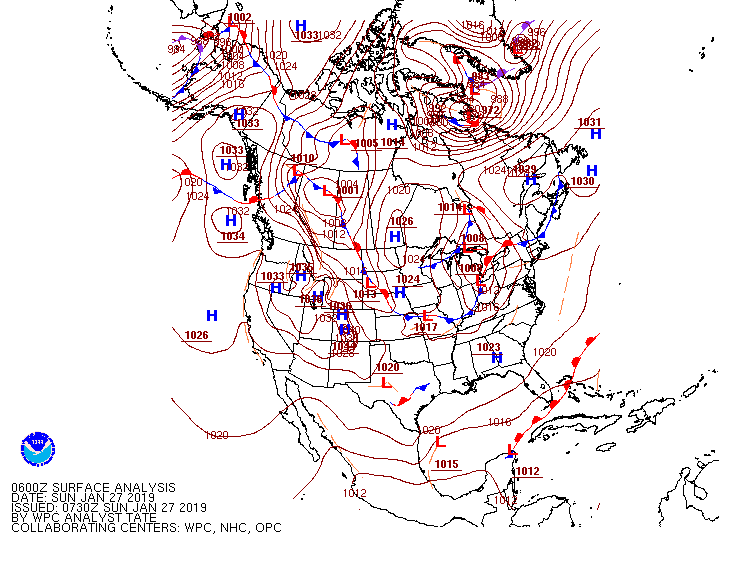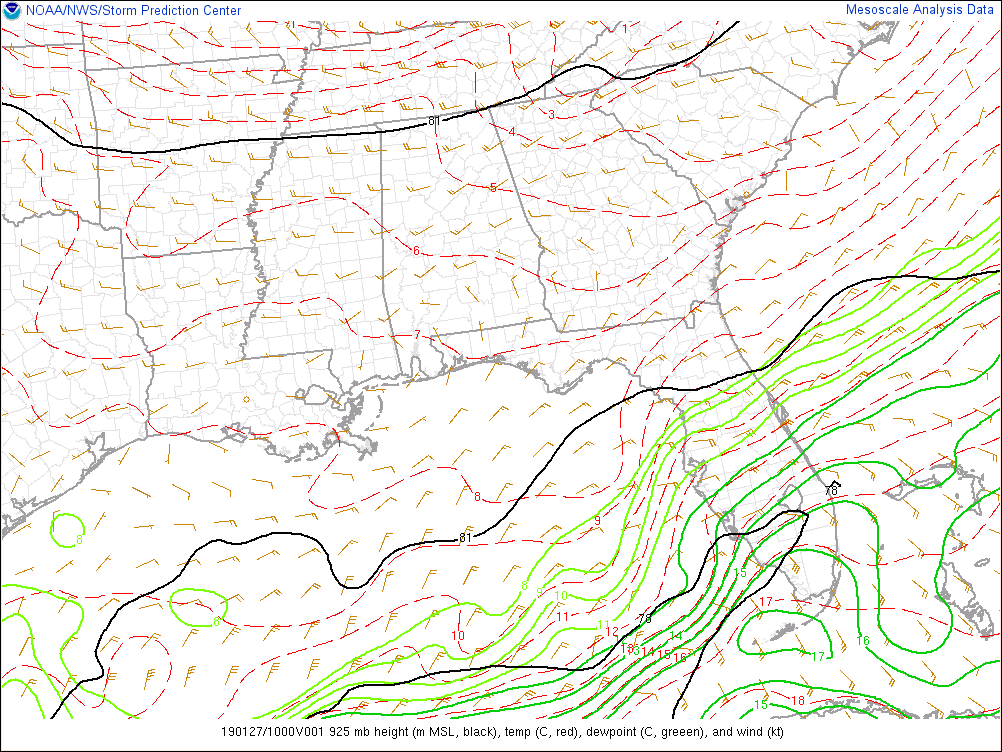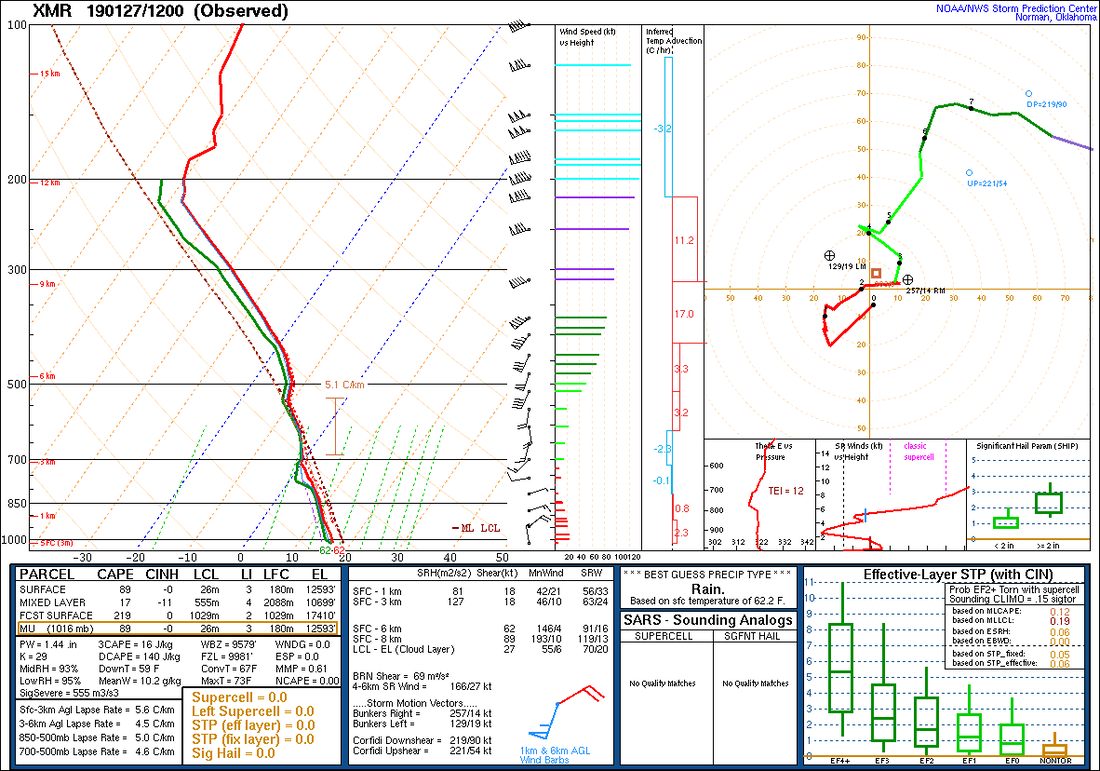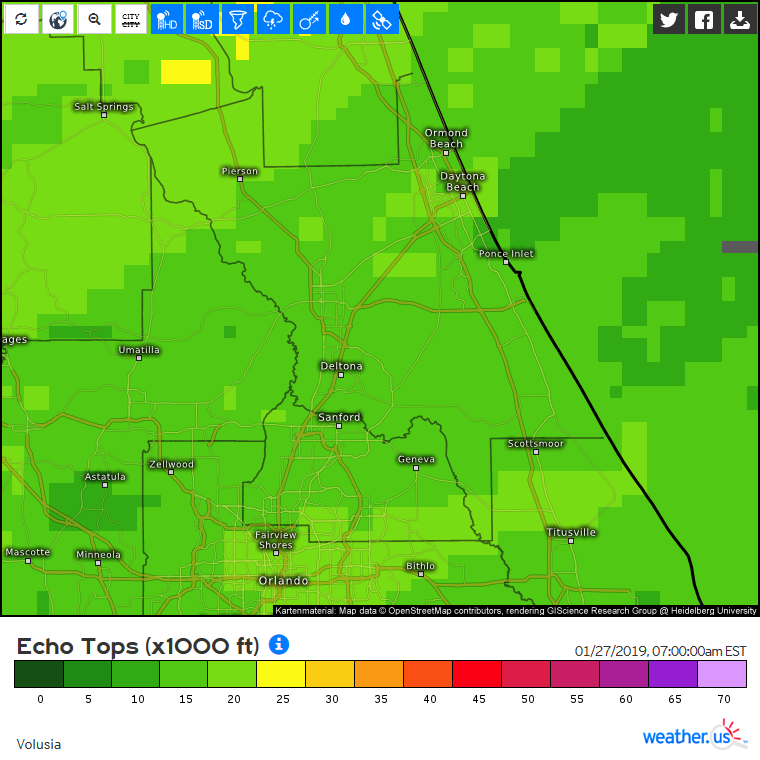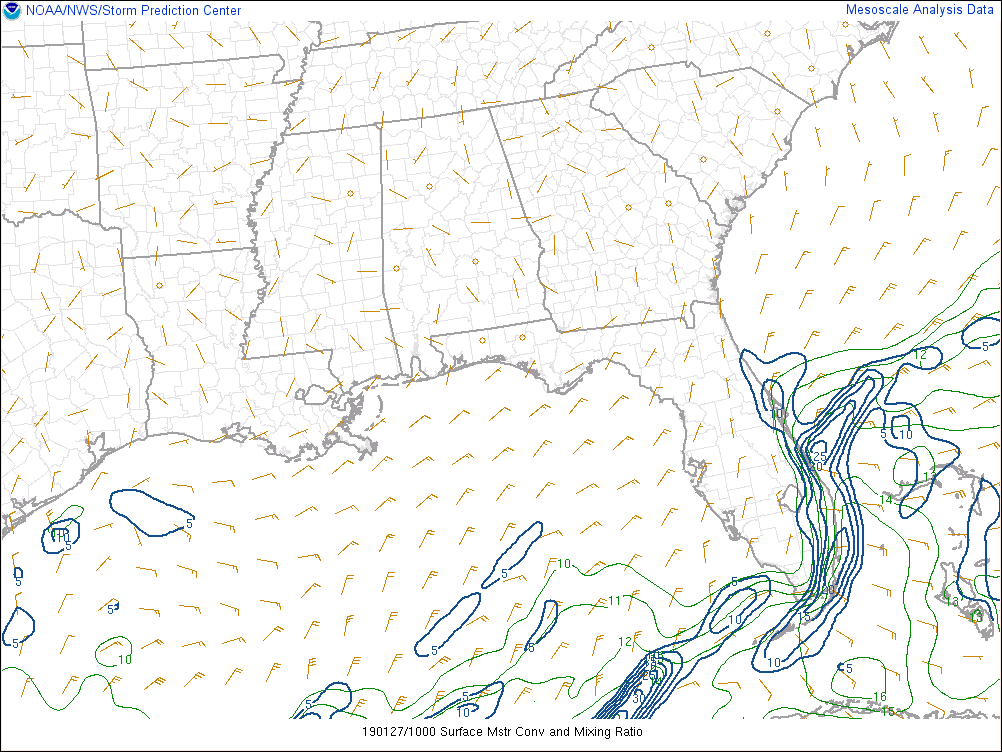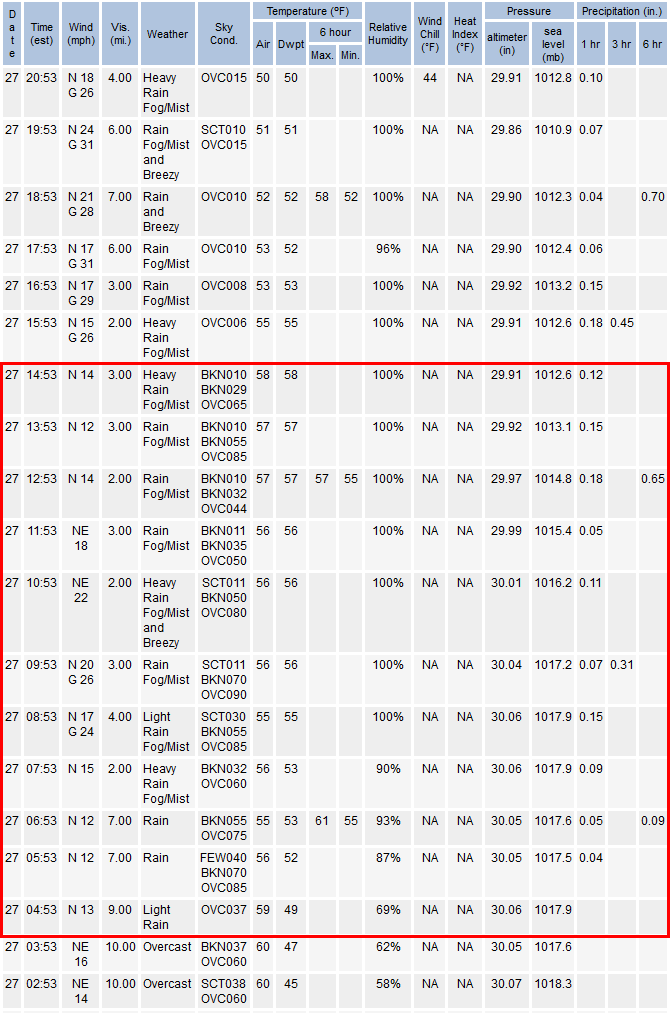To begin, I’ll look at the atmosphere on Saturday night.
One thing to also mention about the surface is a weak high pressure system was centered over central Alabama for most of Saturday, which brought winds to the track mainly from the north to northwest. The dry air at the surface was mostly due to the wind direction, as it crossed over land instead of water.
The anticyclonic (clockwise) rotation around the high pressure system, combined with the cyclonic (counter-clockwise) rotation around the low pressure system created increased winds as the day progressed. The warm front extending from the surface low helped to push dew point temperatures northward, which allowed the air at the surface to approach saturation. In addition, the low level winds were able to transport moisture to the region as they came across the water just off the Atlantic coast. The map below shows the moisture convergence at the surface at 5:00 am, around the start of precipitation.

